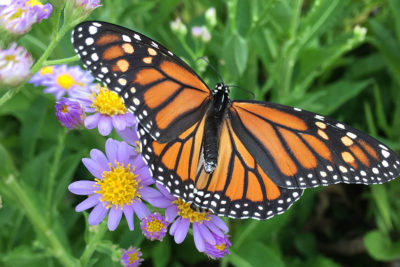
Wolf puppies, photo courtesy of OutThere Colorado
Concern for the planet’s biodiversity is not a question that those of us who live in the Colorado Rocky Mountains normally ask ourselves. But perhaps we should, for more reasons than most of us want to admit.
This is the picture on which many of us like to focus: On one morning last week, this journalist had coffee watching the mule deer in our corner of the San Isabel National Forest in Chalk Creek Canyon, spotted pronghorns on the open meadows of Chaffee County, saw a herd of elk wandering in South Park outside of Fairplay, then chuckled at the sight of three moose cavorting happily in the muddy pond waters at the top of Kenosha Pass.
But a recent Time Magazine feature is prodding the human creatures on earth to acknowledge the truth of the alarms being sounded by scientists: “Human activity has set off the world’s sixth mass extinction event. New research now shows that global animal populations are declining more rapidly than earlier believed.”
The research, published earlier this month in the journal Biological Reviews is based on an analysis of more than 71,000 animal species worldwide. It found that across all animals — mammals, birds, reptiles, amphibians, fish, and insects, that 48 percent of the species have shrinking populations, 49 percent are stable, but only three percent have increased their numbers.
There is more than one study sounding the alarm. Another conservation study by the International Union for Conservation of Nature (IUCN) assessed the extent of mass extinction across 150,300 speciates. The committee’s findings: of the more than 150,300 species evaluated by the committee, 28 percent are considered facing the threat of extinction. In other words, more than one in every four species is facing extinction.
While some might say that it is mankind’s destiny to subdue the earth (a biblical assumption that doesn’t suggest harmony in the Garden of Eden), it is doubtful that the intent was to kill off the other species on earth. But as of this year, the earth’s population is now eight billion people. The combination of urban sprawl, habitat destruction, overuse of resources, industrial “progress”, pollution, over-hunting of species, over-fishing of the oceans, and climate change is cumulative.
Cumulative.
Now species have certainly disappeared over time, making way for other species, either from catastrophic events such as the comet that killed off the dinosaurs, or by natural disasters. But other species, the Passenger Pigeon and the Dodo Bird — were hunted to extinction by humans.
So — what makes this looming mass extinction different than the others before it? It is happening too fast. The snow leopards, the tigers, the gorillas, are among just a few species that are struggling even to reproduce to replace themselves in the wild.
“The issue with this mass extinction, in particular, is that it is happening too quickly,” said research co-author Daniel Pincheira-Donoso, talking with TIME. “Species do not have enough time to evolve to take [over] those [other] species. So we lose and lose and lose, and we don’t see our turnover.”

Monarch butterflies are in decline from habitat loss.
Consider:
- The bee populations – pollinators of much of the earth’s food sources — are in collapse around the globe.
- Amphibians are in trouble: Species like frogs and newts are at the most risk, with a low stable population and a high falling population.
- Monarch butterfly populations have declined dramatically as their habitat has disappeared and their Mexico winter migration destination has disappeared.
- Animal species in tropical areas (traditionally the source of greatest biodiversity) are struggling, due not just to the wild-spread stripping of the rainforests, but to the heating up of the planet.
- Keystone species such as beavers — hunted to drastically low numbers in the 1800s, are in trouble. Wolves are also a keystone species — and at the moment are at the center of a tug of war between those understanding their importance, and those such as ranchers worried about their livelihood. Beavers build wildland wetlands that could be protection against wildfires. Prairie dogs are struggling to maintain their colonies against mankind’s constant advances.
“Keystone species have low functional redundancy,” explains biologist Raquel Filgueiras of the conservancy group Rewilding Europe. “This means that when populations of these species decline or disappear, there are very few or no other species that can fulfill their role. Ecosystems then degrade, and sometimes completely collapse.”
“Collectively, our findings reinforce the warning that biodiversity is on the brink of an extinction crisis,” wrote the authors of the ICUN report.
Perhaps not in our lifetimes — but what of our children’s, children’s, children, and their children’s lifetime? There are extensive ecological and ecosystemic consequences of the actions we are taking today.
It begs the question again — this time for biodiversity reasons and not just climate change realities — what kind of planet will future generations inherit?
Or as another person commented to this journalist a few weeks ago — “What have we done?”
To read the full Time article as well as its links to research, follow this link.








Recent Comments